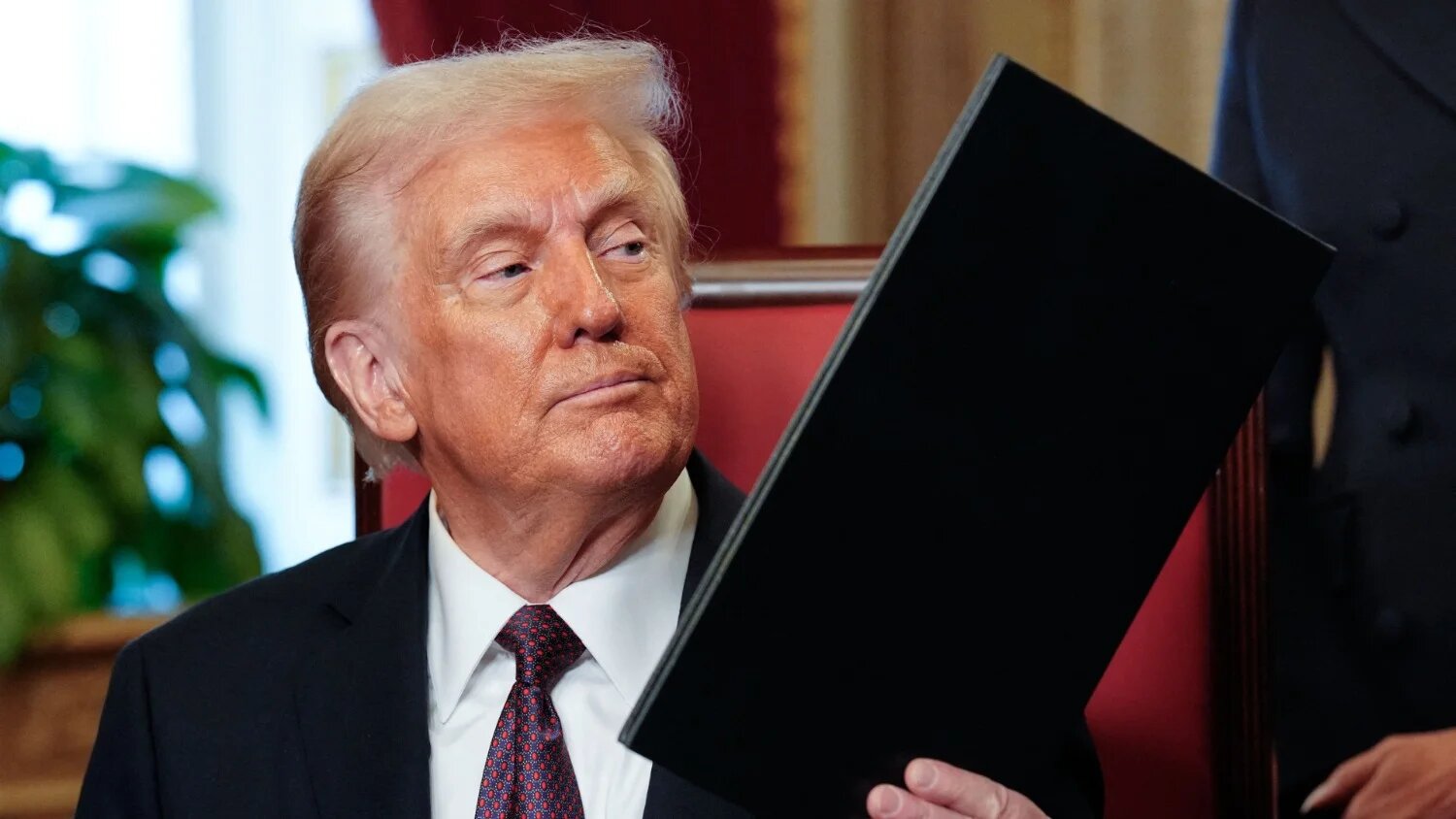Trump's New Executive Order: What It Means For Drug Prices

Table of Contents
Key Provisions of the Executive Order
President Trump's executive order on drug prices tackles the issue from multiple angles, focusing on price transparency, international price comparisons, and Medicare reimbursement changes.
International Price Indexing
This provision proposes to tie the prices of certain prescription drugs in the US to those in other developed countries, primarily Canada. The logic is simple: if a drug costs significantly less in Canada, the US price should reflect that lower cost.
- Mechanics: The executive order would likely establish a formula to compare US drug prices to prices in a basket of comparable countries. This could involve averaging prices across multiple nations, weighting them based on factors like population size or healthcare systems, or focusing on specific drugs within therapeutic classes.
- Potential Benefits: Lower drug prices for American consumers, potentially leading to increased affordability and access to life-saving medications.
- Potential Drawbacks: Pharmaceutical companies argue this could stifle innovation by reducing their profits, potentially leading to less investment in research and development of new drugs. Concerns also exist about the potential for drug shortages if manufacturers choose to prioritize markets with higher prices. Legal challenges are anticipated, as pharmaceutical companies may argue that such price controls violate their intellectual property rights. The selection of comparable countries is also crucial, as differences in healthcare systems and regulatory environments can make direct comparisons difficult.
Transparency Requirements for Pharmaceutical Companies
The executive order mandates increased transparency regarding pharmaceutical pricing and manufacturing costs. This aims to expose potential price gouging and encourage fairer pricing practices.
- Data Disclosure: Pharmaceutical companies will likely be required to disclose more detailed information about their pricing strategies, including research and development costs, manufacturing expenses, and marketing budgets. This data would be subject to public scrutiny and potentially used to justify price negotiations.
- Impact on Pricing: The goal is to make it easier to identify instances where drug prices are significantly higher than justified by the costs of production and development. This increased transparency could put pressure on companies to justify their pricing and potentially lower prices to avoid negative publicity.
- Impact on R&D: Critics argue that increased transparency could negatively affect pharmaceutical companies' investment in research and development by reducing profit margins. This reduced investment might potentially lead to fewer new drug developments in the future.
Changes to Medicare Drug Reimbursement
The executive order also plans to change how Medicare Part D reimburses for prescription drugs. This could affect both the cost of the Medicare program and the out-of-pocket expenses for seniors.
- Current System and Proposed Changes: Currently, Medicare Part D uses a complex system of formularies and rebates. The executive order may modify this system to allow Medicare to directly negotiate drug prices with pharmaceutical companies, similar to what the Department of Veterans Affairs already does.
- Impact on Beneficiaries: The proposed changes aim to lower drug costs for Medicare beneficiaries. However, unforeseen consequences such as reduced drug availability or increased premiums could potentially offset these benefits.
- Impact on Medicare Costs: While negotiating lower drug prices could save Medicare money, the overall impact on the program's budget will depend on the effectiveness of the price negotiations and potential offsets in other areas.
Potential Impacts on Consumers
The executive order's impact on consumers is a complex issue with both potential benefits and drawbacks.
Affordability and Access
- Decreased Out-of-Pocket Costs: The most significant potential benefit is lower out-of-pocket costs for prescription drugs. This could be particularly important for individuals with chronic conditions who rely on expensive medications.
- Increased Access to Medications: Lower drug prices could lead to increased access to essential medications for individuals who currently cannot afford them.
Concerns and Criticisms
- Drug Shortages: Price controls could incentivize pharmaceutical companies to reduce production or even withdraw certain drugs from the US market, potentially leading to drug shortages.
- Limited Availability: Some medications might become unavailable or harder to obtain due to manufacturers' decisions to prioritize markets with higher prices.
- Unintended Consequences: The complexities of the pharmaceutical market mean unintended consequences are possible. These could include higher premiums for health insurance or decreased access to newer medications.
Impact on the Pharmaceutical Industry
The executive order presents significant challenges for the pharmaceutical industry, impacting profitability and potentially research and development.
Profitability and Innovation
- Decreased Profits: Lower drug prices in the US could significantly reduce pharmaceutical companies' profitability, potentially leading to less investment in research and development.
- Stifled Innovation: Reduced investment in R&D could slow the development of new and improved medications. This could particularly affect the development of treatments for rare diseases and conditions that are less profitable to research.
Legal Challenges and Responses
- Legal Battles: Pharmaceutical companies are highly likely to challenge the executive order in court, arguing that it violates their intellectual property rights or exceeds the government's authority.
- Lobbying Efforts: The industry will likely engage in significant lobbying efforts to influence the implementation and ultimate success of the executive order.
- Business Model Adjustments: Pharmaceutical companies may respond by adjusting their business models, perhaps shifting their focus towards markets with less stringent price controls.
Conclusion
President Trump's executive order on drug prices represents a significant intervention in the pharmaceutical market, aiming to address the high cost of prescription drugs. While the order promises to lower costs for consumers and increase access to affordable medications, it also presents potential challenges, including concerns about drug shortages, reduced pharmaceutical innovation, and legal battles. The ultimate success of this executive order will depend on its implementation and the subsequent reactions from the pharmaceutical industry and the courts. Understanding the intricacies of this executive order is crucial for everyone, from patients navigating the complexities of medication costs to policymakers shaping healthcare policy. Stay informed about further developments surrounding Trump's executive order and its impact on drug prices.

Featured Posts
-
 Open Ais 2024 Event Easier Voice Assistant Creation
May 13, 2025
Open Ais 2024 Event Easier Voice Assistant Creation
May 13, 2025 -
 Skarlett Yokhansson Istoriya O Selfi I Prichina Otkaza Fanatu
May 13, 2025
Skarlett Yokhansson Istoriya O Selfi I Prichina Otkaza Fanatu
May 13, 2025 -
 Nba Draft 2025 Teams Most Likely To Secure The No 1 Pick Cooper Flagg
May 13, 2025
Nba Draft 2025 Teams Most Likely To Secure The No 1 Pick Cooper Flagg
May 13, 2025 -
 Celebrating Eva Longorias 50th Her Most Iconic Photos
May 13, 2025
Celebrating Eva Longorias 50th Her Most Iconic Photos
May 13, 2025 -
 Efl Greatest Games A Retrospective Of Classic Matches
May 13, 2025
Efl Greatest Games A Retrospective Of Classic Matches
May 13, 2025
